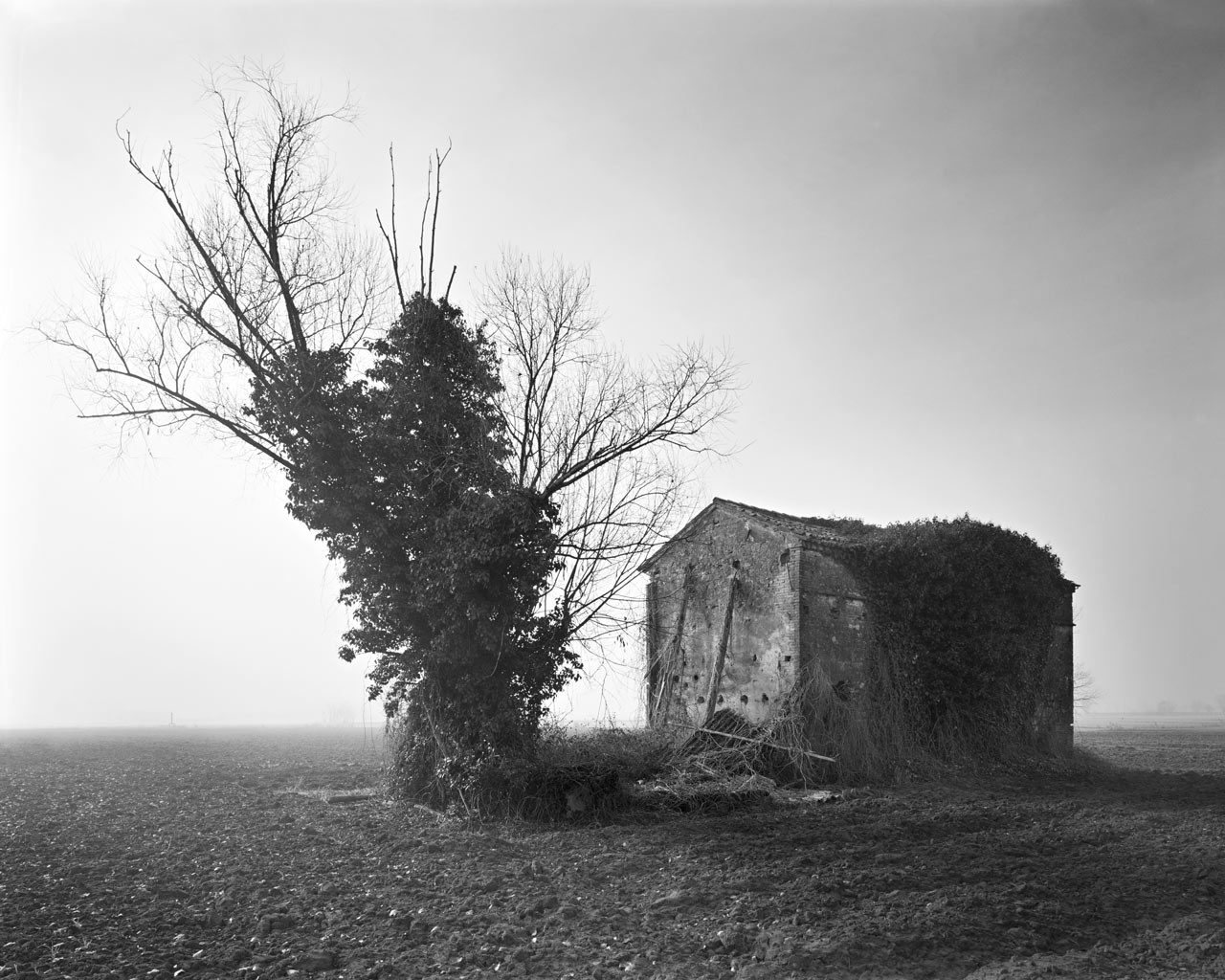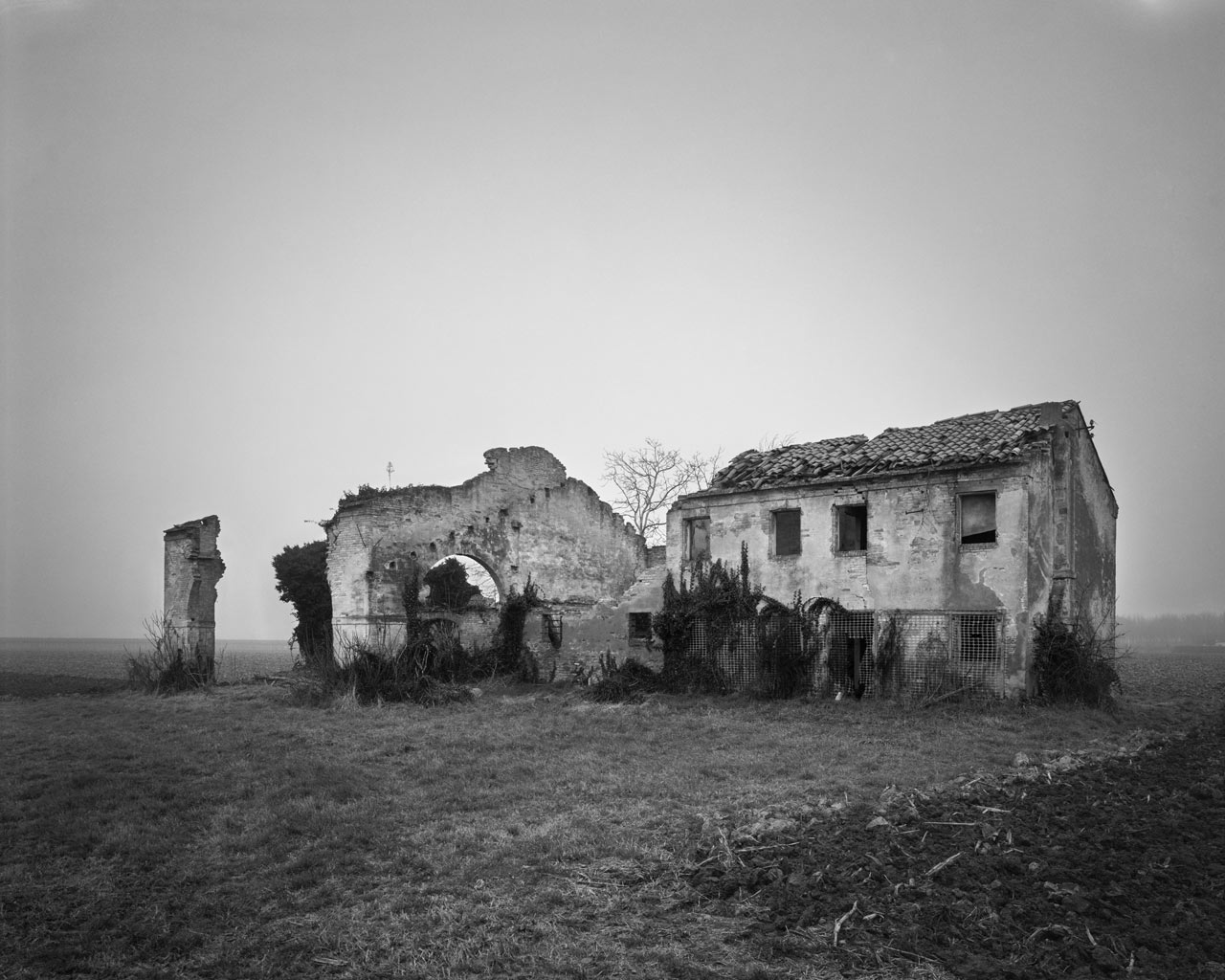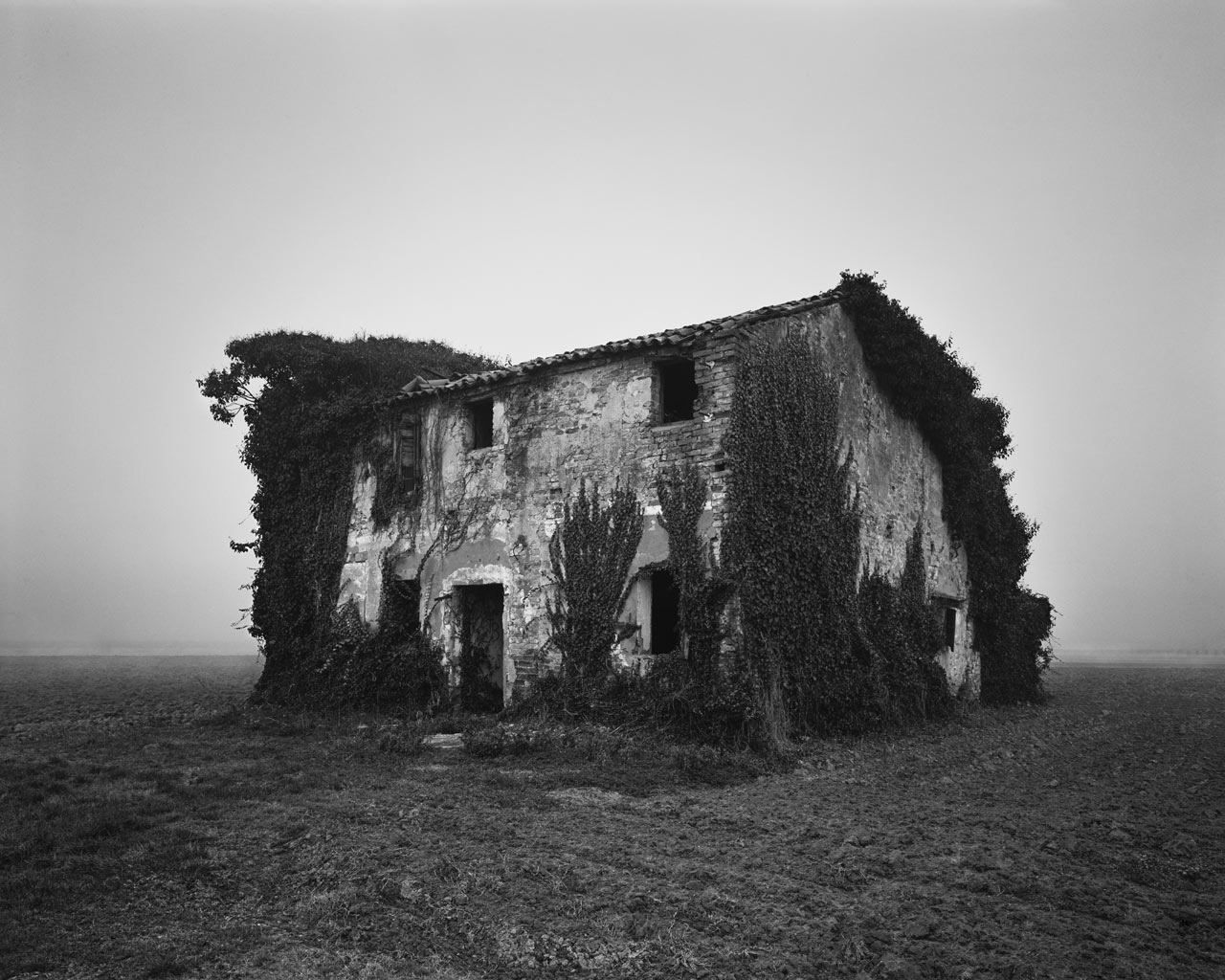cattedrali rurali II
Cattedrali rurali
In every European country, during the 20th century, agriculture as a principal economic sector progressively gave way to industry and the services sector. In some areas this occurred more quickly, as in the Veneto, in the north-east of Italy, which in the 1960s and 70s transformed from one of the poorest regions into one of the wealthiest.
And so, in the hurry to forever escape from the ‘condemnation’ of the land, a place of hardships and fatigue, a deep fracture was created between the rural millennial civilization with its rites, rhythms, and ethical and ecological values and today’s, youthful, industrial and post-industrial civilization. The rural Cathedrals are the vestiges of this fracture. These are not religious buildings, but farmhouses where the families of farmers who cultivated the land lived; or rather, cathedrals, symbols of the sacred bond that people in the past knew how to establish with the land. An ancient relationship, to be remembered once again in the modern day.
Places in the fog, where even in the obscurity of forgotten memory, there is a sacred room where the sounds are muffled, details and context lost, but where we can sense their soul.










